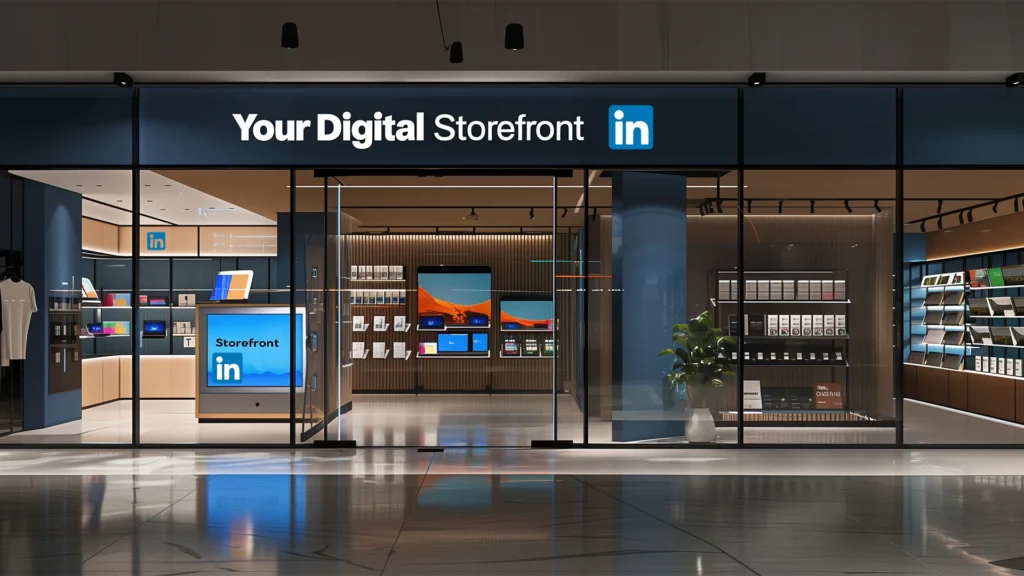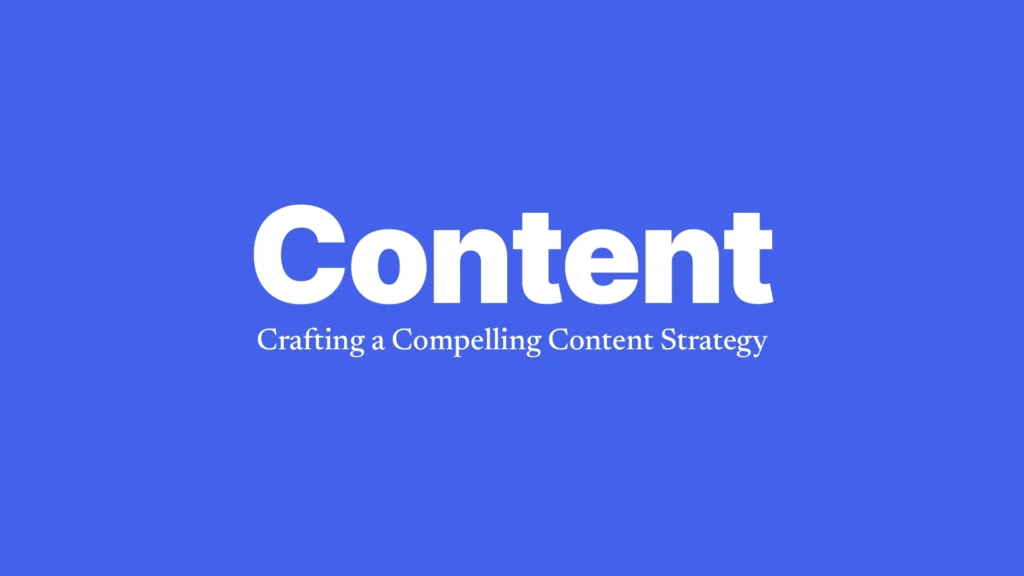Looking to enhance your LinkedIn B2B marketing? This guide provides key approaches to optimizing the performance of your LinkedIn marketing strategy, increasing reach, and improving engagement with other businesses. Learn about improving your company page, crafting impactful B2B content strategy, leveraging LinkedIn Groups, and more.
Key Takeaways
- Optimizing your LinkedIn company page with a compelling profile image, company logo, and a well-crafted ‘About Us’ section can significantly increase visibility and lead generation.
- Content that includes diverse formats like blog posts, videos, and case studies, coupled with a content calendar, is crucial for engaging and attracting your target audience on LinkedIn.
- Utilizing networking opportunities, direct messaging, and automation tools can enhance networking, streamline marketing activities, and build meaningful connections, ultimately boosting your LinkedIn marketing effectiveness.
Optimizing Your Company Page

Your LinkedIn company page is your digital storefront and first impressions matter. Start by uploading a compelling profile image and banner. LinkedIn company pages with profile photos attract six times more visitors. Make sure your cover image is in the recommended format of 1,128px by 191px to visually enhance your page. Adding a company logo and tagline is another crucial step; complete information can boost your page views by 30%.
A well-crafted ‘About Us’ section should:
- Be concise, under 2,000 characters.
- Be filled with relevant keywords and relevant details to effectively communicate your business’s goals and values.
- Have a professional presentation.
This professional presentation can increase purchase intent by 33%, making it a powerful tool to generate leads, enhance lead generation, and attract potential customers.
Optimizing your company page is not just about aesthetics. It’s about creating a compelling narrative that resonates with other businesses. Focus on these elements to not only boost your page views but also to enhance your brand’s credibility and charm.
Remember, your LinkedIn company page is often the first point of contact for potential clients, so make it count and showcase your company size.
Crafting a Compelling B2B Content Strategy

Compelling content is the backbone of your LinkedIn B2B marketing strategy. Understanding your audience is crucial. This means checking relevant YouTube videos, reading competitor reviews, thought leadership articles, and engaging with community forums to gather insights. Effective content topics often come from audience needs, research on platforms like Quora and Reddit, keyword research, and content audits.
A robust business to business content strategy helps businesses create, distribute, and use high-quality content to engage and attract their target audience. Important content types include:
- Blog posts
- Videos
- Case studies
- eBooks
- Whitepapers
- Webinars
- Social media content
Selecting the right content formats and distribution channels depends on your audience. For instance, SEO, videos, or podcasts might be suitable for different segments.
Utilizing a content calendar to plan stories and social posts and assigning them to the right content collaborators ensures consistency and relevance. Including up to three relevant hashtags on your page can increase its discoverability and engagement with industry-related topics. Diverse content caters to various audience preferences, ensuring optimal engagement and brand loyalty.
Read more about ‘The Power of B2B Content Marketing: Engaging Audiences and Driving Growth‘
Leveraging LinkedIn Groups for Networking

Your B2B marketing strategy should include joining groups on LinkedIn as it’s a powerful way to expand your network and attract new leads. These groups allow professionals to participate in discussions and share insights with like-minded individuals, thereby expanding their network and knowledge. Regularly contributing to LinkedIn groups can significantly increase your visibility and attract new leads interested in your insights. Participating in group discussions and fostering relationships with like-minded group members helps build a sense of community and trust.
Encouraging your employees to join relevant LinkedIn groups and participate in discussions can amplify your company’s content reach. This not only boosts your visibility but also positions your company as a thought leader in your industry. Leveraging groups for networking is not just about self-promotion; it’s about building meaningful connections that can lead to long-term business relationships and opportunities.
Effective Use of LinkedIn Automation Tools
Automation tools can significantly streamline your LinkedIn marketing activities. These tools help automate activities like sending connection requests, messaging, and engaging with posts. Automating LinkedIn search allows for quick identification and connection with potential leads. However, automation should not come at the expense of personalization. Integrating LinkedIn with CRM systems can help maintain a human touch in your outreach.
Using automation tools effectively allows you to focus on high-level tasks while ensuring that routine activities are handled efficiently. These tools can enhance your overall marketing on LinkedIn, providing you with more time to engage with your audience meaningfully and strategically.
Best Practices for LinkedIn Direct Messaging
Direct messaging on LinkedIn is a powerful tool when used correctly. Here are some tips to make your messages more effective:
- Be brief and to the point.
- Mention the profile content that prompted you to write to establish a connection.
- Adopt a conversational, enthusiastic tone to make your messages more engaging.
- Clearly explain what you’re hoping to achieve from the conversation.
- Express interest in helping the recipient with their goals.
This approach not only increases the chances of a positive response but also builds a foundation for a mutually beneficial relationship and enhances brand recognition.
Effective direct messaging is about creating meaningful connections, not just sending generic messages. Following these best practices ensures professional and engaging outreach, leading to more fruitful LinkedIn interactions.
Posting Strategies for Optimal Engagement
Posting regularly on LinkedIn can significantly boost engagement rates, with companies posting weekly seeing a notable lift in interactions. This section will delve into specific strategies to optimize your posting efforts, including timing your posts, maintaining consistency, and experimenting with different content types to keep your audience engaged.
Timing Your Posts
Timing your posts is crucial for maximizing visibility and engagement on LinkedIn. Here are some tips for timing your posts:
- Posting on Tuesdays and Wednesdays tends to yield better visibility and engagement.
- The highest engagement times are typically weekday mornings, between 08:00-10:00 a.m.
- For instance, the best time to post on Mondays is at 11 a.m., while Tuesdays and Wednesdays are optimal between 6 a.m. and 10 a.m.
Thursdays and Fridays also have strategic posting times, such as 9 a.m. and 3 p.m., respectively. Even Sundays at 10 a.m. can capture attention before the work week starts. Understanding and leveraging peak engagement times ensures your posts reach the widest possible audience, thereby enhancing your LinkedIn marketing efforts.
Scheduling and Consistency
Consistency is key to maintaining an engaged audience on LinkedIn. Here are some tips to help you stay consistent:
- Maintain a consistent posting frequency, such as once or twice a week.
- Use scheduling tools to ensure that your posts go live at the most strategic times of the day and week.
- Look for tools with features like HootSuite that can automatically schedule posts during the optimal times for maximum engagement.
By following these tips, you can keep your audience engaged and build a strong presence on LinkedIn.
Leveraging scheduling tools helps maintain a steady flow of content, building credibility and keeping your audience engaged.
Experimenting with Content Types
Experimenting with different content types is essential to keep your audience engaged. Some content types to consider are:
- Polls often receive high engagement as they invite direct participation from the audience
- Videos tend to perform well on LinkedIn and capture attention more effectively than text posts
- Articles provide in-depth information and analysis
- Images be visually appealing and grab attention
Diversifying your B2B content with various formats, such as polls, videos, articles, and images, caters to different user preferences and keeps your content fresh and engaging.
Exploring different content types allows you to gather data on what resonates most with your audience, enabling you to refine your strategy for optimal engagement.
Employee Advocacy Programs

Implementing employee advocacy programs can significantly amplify your company’s content reach. Employee advocacy on LinkedIn generates considerably more reach than when brands promote themselves directly. People are more likely to trust recommendations from friends and colleagues than traditional advertisements. Companies should train their teams to effectively use LinkedIn to support marketing efforts. Having a clear strategy and objectives is crucial for successful employee advocacy.
Providing employees with pre-written posts or templates can save time and ensure content aligns with company goals. Tools like Clearview Social allow employees to share company content on LinkedIn with easy prompts, email reminders, and one-click activation. Leveraging LinkedIn’s native features like Kudos to spotlight employees can humanize your brand and showcase company culture.
Measuring Success with LinkedIn Analytics
Measuring the success of your LinkedIn marketing efforts is essential for continuous improvement. LinkedIn analytics provide insights into how well your content is performing and the demographics of your audience, such as age, gender, job title, industry, and location. Key metrics to track include impressions, clicks, reactions, comments, and shares. The LinkedIn Campaign Manager offers tools to track and optimize ad campaign performance, helping you identify trends and patterns over time.
Understanding these analytics enables data-driven decisions to refine your marketing, ensuring both effective and efficient efforts.
The Global Impact of LinkedIn on B2B Marketing

LinkedIn’s global reach makes it a powerful platform for B2B marketing. It is responsible for 80% of all B2B leads from social media. LinkedIn’s ability to target specific professional demographics makes it a preferred choice for B2B lead generation. The platform connects businesses with key decision-makers, with many executives using it for thought leadership. This global reach allows companies to engage with potential clients and partners across different regions.
Leveraging LinkedIn’s capabilities allows businesses to significantly enhance their lead generation efforts, establish strong connections with key industry players, and ultimately drive growth and success.
Enhancing Your LinkedIn B2B Marketing with Tools
Enhance your LinkedIn B2B marketing with various tools available on the platform. Some of these tools include:
- Clearview Social: Provides detailed analytics to track who is seeing your content, the reach, and the earned media value of posts. It supports bulk posting to corporate accounts and offers a comprehensive view of all active and upcoming social media campaigns.
- Discover Content: Helps find fresh, topical content for distribution by syncing with industry news, RSS feeds, and popular trends.
- Virtual assistant and AI tools: For caption generation and automated content delivery.
These tools can help you optimize your LinkedIn marketing efforts and reach a wider audience through your LinkedIn feed, as well as other social media channels.
LinkedIn Sales Navigator offers advanced search filters to find and connect with a targeted audience more efficiently. Integrating LinkedIn and email outreach can improve the visibility and effectiveness of outreach campaigns. These tools significantly enhance your LinkedIn marketing efforts, boosting its efficiency and impact.
Summary
The topics discussed in this blog post provide a comprehensive guide to enhancing your business to business marketing strategy and mastering marketing on LinkedIn. From optimizing your company page to leveraging groups on LinkedIn and automation tools, these approaches can help you build a strong LinkedIn presence, engage with your audience, and drive business growth. By implementing these strategies, you can harness the full potential of LinkedIn, making it a cornerstone of your B2B marketing efforts.
Frequently Asked Questions
Why is optimizing the LinkedIn company page important?
Optimizing your LinkedIn company page is crucial as it can attract more visitors and increase purchase intent. Complete information and a compelling profile can boost page views by 30% and increase purchase intent by 33%.
What are the key components of compelling B2B content on LinkedIn?
The key components of a compelling business to business content on LinkedIn include understanding your audience, researching content topics, and creating high-quality content in various formats like blog posts, videos, and case studies. These elements help in engaging and resonating with your LinkedIn audience.
How can groups on LinkedIn be leveraged for networking?
To leverage groups on LinkedIn for networking, join relevant groups, engage in discussions, and build relationships with professionals who share similar interests, expanding your network and attracting new leads.
What are the best practices for LinkedIn direct messaging?
When using LinkedIn direct messaging, it’s best to be brief, mention profile content, adopt a conversational tone, and express genuine interest in helping the recipient. This approach can help create meaningful connections and interactions.
How can businesses measure the success of their LinkedIn marketing efforts?
To measure the success of your LinkedIn marketing efforts, use LinkedIn analytics to track key metrics like impressions, clicks, reactions, comments, and shares, and utilize LinkedIn Campaign Manager for ad campaign performance. This allows you to have a comprehensive understanding of your marketing impact.